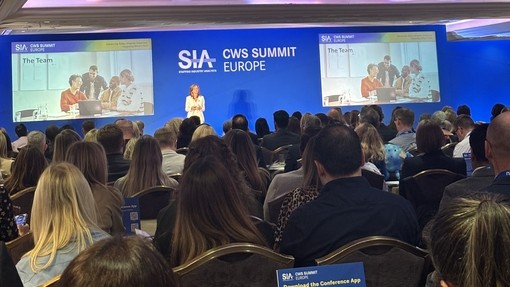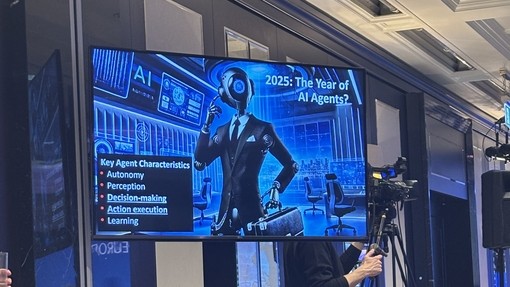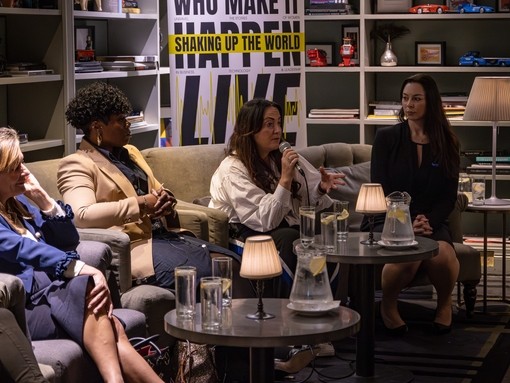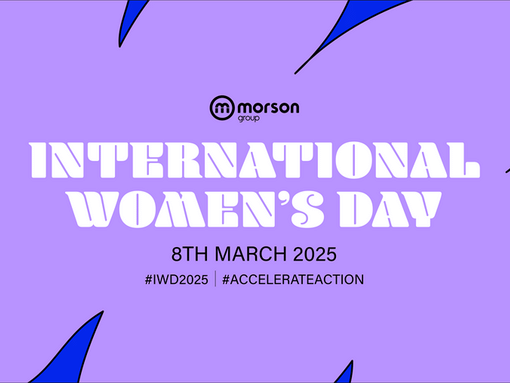
What’s next for the contingent workforce? Key takeaways from the CWS Summit Europe
Talent shortages. New rules. AI on the rise. The contingent workforce is entering a bold new era and CWS Summit Europe 2025 delivered the data, trends, and tactics to own it. Morson was front and centre there, ready for what’s next.

On May 20–21, the CWS Summit Europe 2025 – Europe’s leading conference for contingent workforce management, hosted by Staffing Industry Analysts (SIA) – welcomed over 650 workforce management professionals from 26 countries.
Morson proudly served as a Platinum Sponsor for the event, which brought together industry leaders to explore the future of work. From AI and automation to complex legislation. The conference opened with a bold keynote and focused on how businesses can navigate today’s volatility while embracing the opportunities of tomorrow.
In terms of our presence, Morson’s own David Lynchehaun led a panel featuring senior leaders from across the Group, discussing how AI is transforming skills-based matching and organisational operations. AI emerged as a central theme, underscoring its growing role in outsourced talent strategies.
So, what other key insights are shaping the future of the contingent workforce?
The contingent workforce in a shifting world
The past few years have pushed businesses to their limits. Navigating uncertainty, shifting markets, and relentless pressure to adapt has left many organisations in survival mode. Reacting, rather than planning for the future. It’s no surprise, then, that the theme at the heart of the conference was the future: imagining what’s next.
Dawn McCartney, Senior Vice President of CWS at SIA, opened with a powerful question: “If your business asked you to scale now, would you be able to do so successfully” For many, the honest answer was no – years of reactive decision-making had sidelined strategic workforce planning.
But today’s contingent workforce isn’t just about short-term fixes. It’s about building agile, scalable ecosystems that balance cost, compliance, and capability without losing speed or flexibility. Companies now face growing demands for visibility, cross-border compliance, and alignment with long-term goals.
Dawn’s keynote speech echoes Morson’s own approach to remaining agile, developing solutions that genuinely resolve challenges, and embracing the power of tech and AI.
Contingent hiring has become more sophisticated, requiring smarter systems, data-driven strategies, and a complete rethink of talent management. Discover all the insights in this article to learn how your organisation can stay one step ahead.
1. Begin with clarity and vision
Innovative talent sourcing begins with clear vision and purpose. It’s about working closely with customers to understand exactly what they need, and then translating that into a clear, shared vision that drives collaboration and unlocks the full potential of any talent programme.
For years, the idea of total talent solutions has been discussed but too often, a lack of alignment across HR, procurement, finance, and project teams has slowed progress. A well-defined vision bridges those gaps. It creates a common framework that unites functions, ensuring that teams aren’t just working in parallel, but working towards the same goal.
This clarity allows organisations to progress with intention, making deliberate, aligned decisions about the teams they build, the skills they acquire, and the way they source talent. The result is a talent strategy that delivers real efficiencies, unlocks value, and drives innovation across the business.
At its core, success lies in creating shared goals, especially between HR and procurement, ensuring these critical functions work together to build agile, future-ready workforce strategies.
2. Value the power of sponsorship
For years, contingent workforce programmes have largely sat within procurement’s remit. But the landscape is shifting. The CWS Summit highlighted a growing focus on skills access and workforce agility, moving the conversation firmly into the domain of HR and talent, while still keeping compliance in view.
Yet, one thing remains critical: executive sponsorship.
Without buy-in from leadership, even the best-designed programmes struggle to deliver the impact they promise. Too often, we see initiatives stall or fail because they lack the senior-level support needed to drive change, secure investment, and embed workforce solutions into the heart of business strategy.
To unlock the true value of a contingent workforce programme, it must have strong executive sponsorship from the start. Without it, the benefits will remain out of reach.
3. Embrace AI and reshape talent acquisition

The future of hiring is evolving, and AI is set to transform the process. Businesses that fail to embrace this shift risk falling behind in a market where agility and innovation are key. The message from the CWS Summit was clear: AI and automation must be part of any outsourced talent strategy from day one.
Organisations should identify roles that can be enhanced or automated while preparing for long-term change. That means anticipating how AI will redefine work, predicting future skill needs, and evolving talent strategies accordingly.
Already, 19% of organisations use AI instead of contractors, and 10% use automation – figures expected to rise, especially in sectors like manufacturing and logistics. AI agents will increasingly power digital transformation, boosting efficiency. For example, Shopify’s CEO now requires proof that a role can’t be done by AI before approving new hires.
The challenge for organisations is clear: don’t just adopt AI, but embed it into the core of your workforce strategy.
At Morson, we see AI not as a threat but as a powerful tool that’s reshaping how we source talent, improving job matching, and redefining the role of recruiters.
4. Harness the power of independent contractors
While the market may be swinging back in favour of employers, that’s far from the reality for all roles. The skills-first approach remains essential, but what’s clear is that job design must come back into focus. Now is the time to get back to basics, asking the tough questions about every role: What value does this bring to the organisation?
It’s also time to rethink the contractor value proposition. Is it clear, compelling, and easy to understand? What kind of experience are contractors having once they’re on assignment? During the conference, Arcadis shared a great example of how they’ve addressed this through a dedicated CWK programme newsletter, created in partnership with Morson, ensuring clear communication and engagement with their contingent workforce.
The conversation also highlighted the sheer scale of independent contractor engagement globally, with spend reaching an estimated $1.8 billion.
Organisations shouldn’t just access talent but engage it meaningfully, making sure the value exchange works for both the business and the individual.
5. Ensure a compliance-first approach

In today’s volatile world, having clear visibility over your workforce and ensuring compliance has never been more critical. As global regulations evolve, the landscape for contingent workers is shifting, with growing focus on worker rights, reclassification risks, and the legal frameworks that shape how talent is engaged.
The SIA Summit highlighted a key point: using Statements of Work (SOW) doesn’t automatically mitigate risk. In many cases, it can actually obscure the true nature of the relationship between business and worker. That’s why having a clearly defined engagement model – and understanding when and how to use different talent channels – is essential to ensuring both compliance and the best route to talent.
Ongoing compliance isn’t a one-time check. Organisations must regularly revisit how they engage independent contractors, ensuring that any changes in role, scope, or location don’t unintentionally trigger compliance risks.
Staying ahead means building compliance into the heart of your talent strategy, not as an afterthought, but as a core pillar of responsible workforce management.
6. Unlock insights through data
A clear message emerged at the summit: the simpler and more streamlined your tech stack, the easier it is to access high-quality data. When technology is overly complex, teams can quickly get overwhelmed, drowning in data rather than using it effectively.
The real power lies in harnessing AI to unlock actionable insights. AI accelerates analysis, transforming raw data into compelling stories that drive decision-making and innovation.
For business and programme leaders, storytelling is not just a nice-to-have. It’s essential.
Consistently communicating insights helps drive adoption, adaptation, and evolution of talent programmes, ensuring they deliver maximum impact.
At Morson, we mastered talent matching and we are proud to admit that we are implementing new technologies, AI, automation and data to streamline our talent matching processes.
Our total talent solution is where our expertise in engineering and people solutions effortlessly combine to offer a programme that delivers a holistic approach to engaging talent in your business. This is achieved via permanent and contingent recruitment, statement of work and specialist consultancy services that cover the entirety of the employee lifecycle and business ecosystem.
Get in touch today if you need help with managing contingent workforce.
















